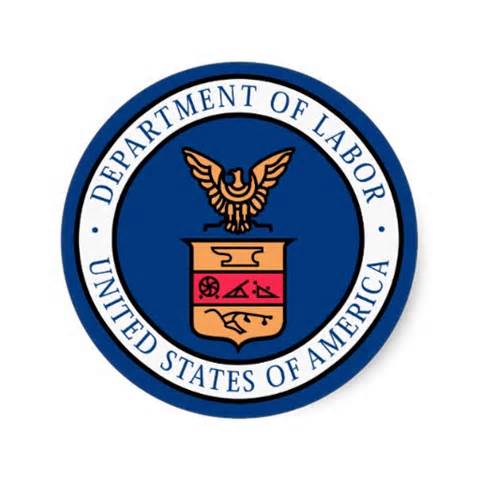By Jeff Mamorsky (November 17, 2023, 5:25 PM EST)
On Nov. 3, the U.S. Department of Labor published a new set of regulatory proposals expanding the circumstances under which a person will be considered an investment advice fiduciary under the Employee Retirement Income Security Act and the Internal Revenue Code, and proposed amendments to prohibited transaction exemption, or PTE, 2020-02 that increase the reasonable compensation disclosure requirements.
In reviewing the proposed amendments, I immediately thought of the Aug. 4 decision from the U.S. Court of Appeals for the Ninth Circuit in Bugielski v. AT&T Services Inc., where participants in AT&T’s 401(k) plan sued the plan administrator, AT&T Services, and the plan’s investment committee.
The suit alleged that the defendants engaged in a prohibited transaction under ERISA Section 406(a), and breached their duty of prudence under ERISA Section 404(a), by failing to investigate and evaluate all the compensation — direct and indirect — earned by Fidelity Investments Institutional Operations Co . Inc., the plan’s record-keeper, and Brokerage Link, Fidelity’s brokerage account.[1]
The Ninth Circuit decision highlights why it is so important for financial institutions and advisers to disclose third-party compensation arrangements. It also highlights why plan sponsor fiduciaries must review such agreements to ascertain the “reasonableness” of the financial institution or financial adviser’s total direct and indirect compensation.
A determination of reasonableness is a critical component of qualifying for the ERISA Section 408(b)(2) prohibited transaction exemption, known as the “furnishing of services” exemption. In the absence of a determination of the reasonableness of total compensation, plan sponsor fiduciaries are in danger of being sued for breach of fiduciary duty for allowing the plan to enter into a prohibited transaction and the financial institution or financial adviser may be unable to engage in any transaction with the plan including the receipt of compensation.
This is now even more important in view of DOL’s recent issuance of regulatory proposals and proposed amendments to PTE 2020-02, which explicitly conditions compliance on the financial institution’s or fiduciary adviser’s total compensation — direct and indirect — being reasonable. Although the regulatory proposals and proposed amendment have not yet been finalized, this is an important issue to deal with now.
In Bugielski, the claims were prompted by amendments to AT&T’s contract with Fidelity, which gave plan participants access to mutual funds not otherwise available through Brokerage Link, Fidelity’s brokerage account platform, for a fee, and to investment advisory services through Financial Engines, a third-party adviser.
Under this arrangement, Fidelity received revenue-sharing fees from the mutual funds available to participants via the brokerage account platform; and, through its own agreement with the investment adviser, Fidelity received a portion of the fees that the investment adviser earned from managing participant accounts.
According to the Ninth Circuit’s ruling, the compensation Fidelity received from Financial Engines was significant; in some years, Fidelity received approximately half of the total fees that Financial Engines charged participants, resulting in millions of dollars in compensation for Fidelity.
The Ninth Circuit held that the “furnishing of services” exemption requires that the plan fiduciaries scrutinize and evaluate the third-party compensation arrangements between Fidelity, Brokerage Link and Financial Engines, under which Financial Engines would remit to Fidelity part of the fee paid by the plan to Financial Engines for reasonableness.
Connection Between Bugielski and PTE 2020-02
The issue highlighted in Bugielski — the obligation of sponsor fiduciaries to review the reasonableness of indirect third-party fees received by service providers — is identical to a requirement in the recently proposed DOL investment advice fiduciary regulation that explicitly conditions the availability of PTE 2020-02 on the fiduciary adviser’s compensation — direct or indirect— being reasonable.
The sponsor fiduciary’s obligation to review and monitor indirect compensation that is at the heart of Bugielski would also apply to fiduciary advisers. In addition to monitoring the reasonableness of the adviser’s indirect compensation, there are a number of other conditions in the proposal related to the impartial conduct standards that may also require review and monitoring.
Bugielski v. AT&T
The participants argued that AT&T’s amendment of its contract with Fidelity to incorporate the services of Brokerage Link and Financial Engines was a prohibited transaction under ERISA Section406(a)(1)(C), which specifically prohibits a transaction that constitutes the direct or indirect “furnishing of goods, services, or facilities” between a plan and a “party in interest.”
In the Bugielski case, service providers such as Fidelity, Brokerage Link and Financial Engines would be considered a party in interest. The participants argued that this transaction was not exempt under Section 408(b)(2), which only exempts from Section 406’s prohibition of service contracts or arrangements between a plan and a party in interest if:
The contract or arrangement is reasonable; The services are necessary for the establishment or operation of the plan; and No more than reasonable compensation is paid for the services.
For the furnishing-of-services contract arrangement to be reasonable, the party in interest must disclose to the plan’s fiduciary all direct and indirect compensation that the party expects to receive in connection with the services provided pursuant to the contract or arrangement.
The plan participants claimed that AT&T’s amendment of the contract with Fidelity to incorporate Financial Engine’s and Brokerage Link’s services did not satisfy the requirements of Section 408(b)(2) because AT&T failed to obtain the requisite disclosures of the compensation Fidelity received from these service providers and to determine that such compensation was reasonable.[2]
The plan participants also alleged that AT&T violated ERISA Section 404 and its duty to act prudently by failing to consider this compensation. Section 404 imposes a duty of prudence upon fiduciaries, requiring them to discharge their duties “with the care, skill, prudence, and diligence under the circumstances then prevailing that a prudent man acting in a like capacity and familiar with such matters would use in the conduct of an enterprise of a like character and with like aims.”
The U.S. District Court for the Central District of California granted summary judgment in favor of the defendants on all claims. The court held that the claims failed because the defendants had no duty to consider the compensation that Fidelity earned from the brokerage account platform or the investment adviser when evaluating Fidelity’s compensation.
On appeal, the Ninth Circuit held that the amendment of AT&T’s contract with Fidelity was a prohibited transaction for the furnishing of services between the plan and a party in interest, and therefore, could be permitted only if it satisfied the requirements for the ERISA 408(b)(2) reasonable-contract exemption.
The Ninth Circuit explained that, in its view, Congress intended ERISA’s prohibited transaction rules to be broad enough to capture even arm’s-length transactions with service providers.
In so holding, the Ninth Circuit rejected the reasoning of other circuit court decisions, which more narrowly construed the prohibition against the furnishing of services based on concerns that a broad, per se construction of the statute would hinder fiduciaries’ ability to contract with third parties for essential services.[3]
These circuit court decisions instead required that a plaintiff plead facts supporting an element of intent to benefit a party-in-interest to state a claim under the ERISA 408(b)(2) contract exemption.
The Ninth Circuit therefore concluded that the duty of prudence requires consideration of the indirect compensation Fidelity received from the brokerage account platform and the investment adviser.
The Ninth Circuit thus remanded the case to the district court to consider whether Fidelity received no more than reasonable compensation from all sources for the services it provided to the plan, and to determine whether the defendants sufficiently considered all components of the recordkeeper’s compensation to satisfy their duty of prudence.
Commentary and Analysis
All of ERISA’s prohibited transactions, including the furnishing-of-services prohibited-transaction exemption contained in ERISA Section 406(a)(1)(C), occur when there is a direct or indirect transaction between the plan and party in interest, which includes plan service providers.
The drafters of ERISA included the phrase “direct or indirect” on purpose to avoid employer plan sponsor and service provider abuse, which is the primary objective of ERISA. I was present during the ERISA drafting process and recall that it was the drafters’ intent that a prohibited transaction is an automatic, per se violation that does not require pleading facts to support an element of intent to benefit a party in interest.
The Ninth Circuit agreed, emphasizing that the prohibition against transactions between plans and parties in interest is per se in nature and that a violation does not depend on whether any harm results from the transaction. Specifically, the Ninth Circuit pointed out that it previously recognized the broad scope of Section 406, explaining that Section 406 creates “a broad per se prohibition of transactions ERISA implicitly defines as not arm’s-length.[4]
PTE 2020-02
The recent proposed amendments to PTE 2020-02 requiring that the fiduciary adviser’s compensation— direct or indirect — be reasonable, and adding a plan sponsor fiduciary obligation to review and monitor indirect compensation, is at the heart of Bugielski.
These requirements are contained in the PTE’s impartial conduct standards, which require financial institutions and investment professionals to provide advice that is in the best interest of the retirement investor, receive only reasonable compensation, and avoid making statements about the recommended transaction and other relevant matters that are materially misleading.
The proposed amendments to PTE 2020-02 would largely maintain the exemption’s impartial conduct standards in their current form. However, the DOL is proposing to amend the requirement that fiduciaries avoid making materially misleading statements.
The change would explicitly prohibit financial institutions and investment professionals from omitting information that is needed to prevent such statements from being, under the circumstances, not misleading. The amendments would also clarify that the requirement applies to both written and oral statements.
New Disclosure Requirements
Currently, PTE 2020-02 requires that financial institutions provide certain disclosures to retirement investors prior to engaging in a recommended transaction. The proposed amendments to PTE 2020-02 would increase the disclosure requirements in the following respects.
Acknowledgment of Fiduciary Status
PTE 2020-02 currently requires that the investment professional and its supervisory financial institution provide a written acknowledgment that they are fiduciaries under ERISA with respect to fiduciary investment advice provided to the retirement investor.
The DOL now proposes to also require a statement that the investment professional and financial institution are providing fiduciary investment advice. In the preamble to the proposed amendments, the DOL emphasizes that a conditional acknowledgment that an investment professional or financial institution may be fiduciaries would not be sufficient to meet this requirement.
Statement of Best Interest Standard of Care
The proposed changes to PTE 2020-02 would include a new requirement that financial institutions provide retirement investors with a statement of PTE 2020-02 ‘s best interest standard of care.
Description of Services to Be Provided and Material Conflicts of Interests
PTE 2020-02 currently requires financial institutions to provide a written description that is not misleading of the financial institution’s and investment professional’s services and material conflicts of interest. The DOL’s proposed changes would clarify that this requirement would be violated if the description is misleading in any respect.
Further, the proposed amendments would require the financial institution to disclose whether the retirement investor will pay for services directly or indirectly, including through third-party payments, defined to include gross dealer concessions; revenue sharing payments; 12b-1 fees; distribution, solicitation or referral fees; volume-based fees; fees for seminars and educational programs; and any other compensation, consideration or financial benefit paid by a third party to a financial institution; and the retirement investor will pay through commissions or transaction-based payments.
What to Do
As a result of the Ninth Circuit decision, plan fiduciaries must review for reasonableness payments to service providers under third-party arrangements.
In particular, plan sponsors need to investigate and evaluate all compensation earned by their plan record-keepers and determine whether they are receiving indirect compensation from third parties and, if they are, determine what action needs to be taken.
Also, financial institutions and investment advice fiduciaries should carefully review the recently issued DOL investment advice regulatory proposals and the proposed amendments to PTE 2020-02 to make sure they are in compliance.
If not, they run the risk of committing a prohibited transaction under ERISA 406(a) since they are a party in interest providing services to the plan, and in the absence of compliance with the 408(b)(2) exemption and PTE 2020-02, are unable to engage in any transaction with the plan including the receipt of compensation.
It is therefore of critical importance that financial institutions and investment advice fiduciaries comply with the prohibited transaction exemptions and the PTE 20200-02 proposed amendments.
The proposed changes increase the disclosure requirements, making it so that that they cannot be misleading in any respect, including the required disclosure concerning whether the retirement investor is paying for services directly or indirectly through third-party payments, such as dealer concessions, revenue-sharing payments, 12b-1 and volume-based fees.
This is an important issue to deal with now, even if the regulations and changes to the PTE have not yet been finalized as proposed.
Jeff Mamorsky is a partner at Cohen & Buckmann PC
The opinions expressed are those of the author(s) and do not necessarily reflect the views of their employer, its clients, or Portfolio Media Inc., or any of its or their respective affiliates. This article is for general information purposes and is not intended to be and should not be taken as legal advice.
[1] Bugielski v. AT&T (76 F.4th 894)
[2] 29 C.F.R. § 2550.408b-2(a)
[3] Sweda v. University of Pennsylvania, 923 F.3d 320 (3d Cir. 2019) and Albert v. Oshkosh Corp. , 47 F.4th 570 (7th Cir. 2022)
[4] M & R Inv. Co. v. Fitzsimmons, 685 F.2d 283, 287 (9th Cir. 1982)
The original article can be found here.




